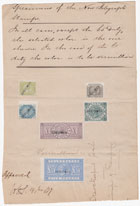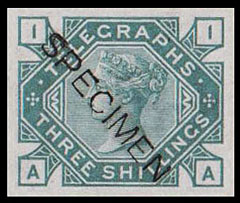
For the second issue, colour trials were taken for all six values. They were dated “15 DEC 76”. One sheet of each colour was printed: 4d in sage-green, 6d in grey, the four higher values in six fugitive colours lettered “A” to “F”, and one sheet of £5 in gold, for a total of 27 sheets.
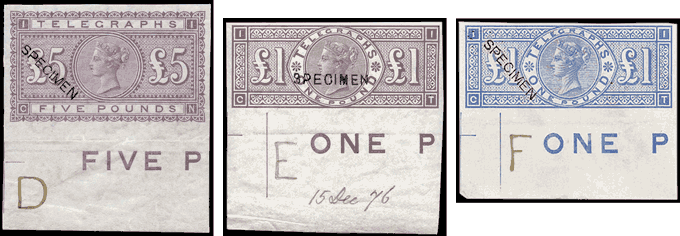
Margin Inscriptions
Each of the 27 sheets had manuscript along the bottom margin. This is the margin which is at the bottom when the paper is viewed upright, and becomes the right margin for the 4d, 6d, and 3s which were printed sideways.
The 4d and 6d were to be in the same colours as the corresponding postage stamps so only one sheet of each were submitted, 4d in sage-green and 6d in grey.

4d Sage-green margin — reconstruction.
To see the existing piece of the 4d margin inscription click here.

6d Grey margin — reconstruction.
TE (with “DEC 76”) is in the Phillips Collection.
TH (with “6d P…”) is in the Royal Philatelic Collection.
One sheet of the £5 was printed in gold but the cost estimate of 4d to 6d per stamp ruled this out.

£5 Gold margin — reconstruction.
For the 24 sheets in fugitive colours, all but one that we have seen follow the same format, with the datestamp to the left of centre and a letter “A” to “F” to the right of centre in the bottom margin. The exception is the £1 brown-lilac “E” sheet which has a manuscript date instead of a hand stamp.

3s Grey-green margin — reconstruction.

£1 Brown-lilac margin — reconstruction.
The Six Fugitive Colours — A to F
The four higher values were printed in six fugitive colours, one sheet of each, with a letter “A” to “F” in the sheet margin next to the datestamp.
It seems that different inks were used for each value and the colour names cover a range of colours. The colour of the 3s brown-lilac, for example, is quite different from the £5 brown-lilac. Possibly inks were mixed in small amounts sufficient to print just one sheet at a time. Also, as a consequence of variable storage, there are significant colour variations within the stamps from each value. In the past this has led to the incorrect conclusion that there was more than one sheet of each colour.
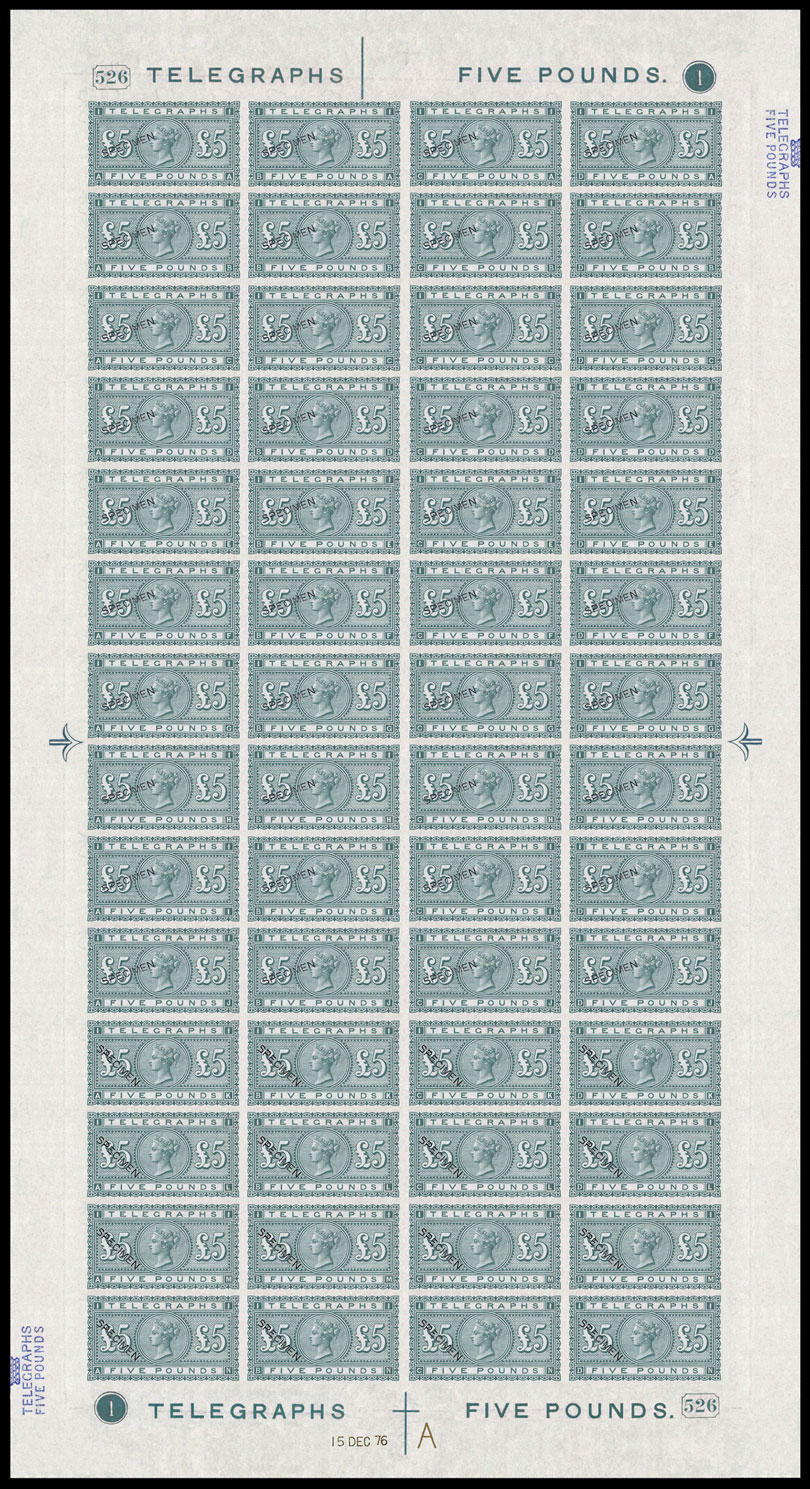
Grey-green
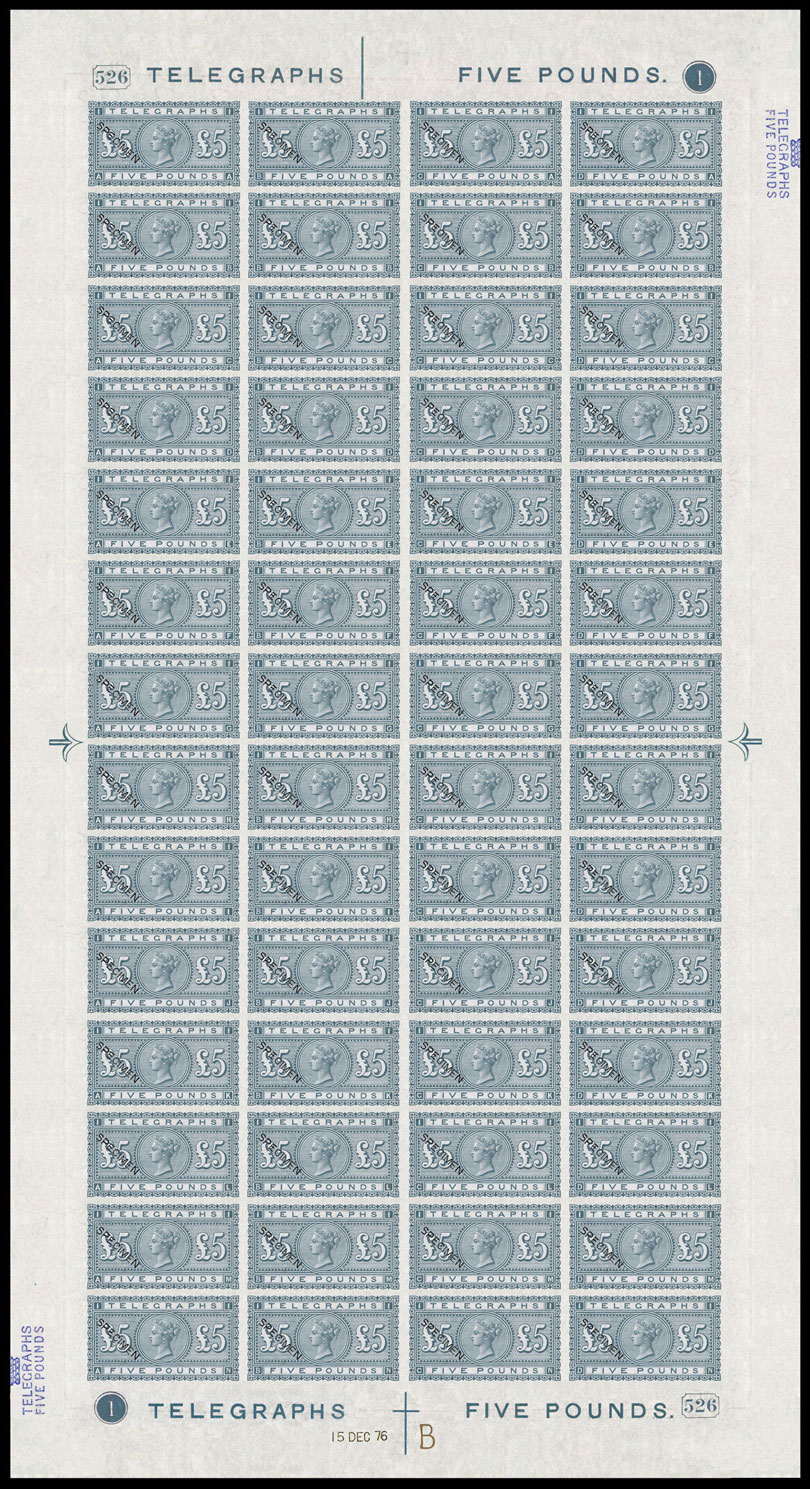
Slate-blue
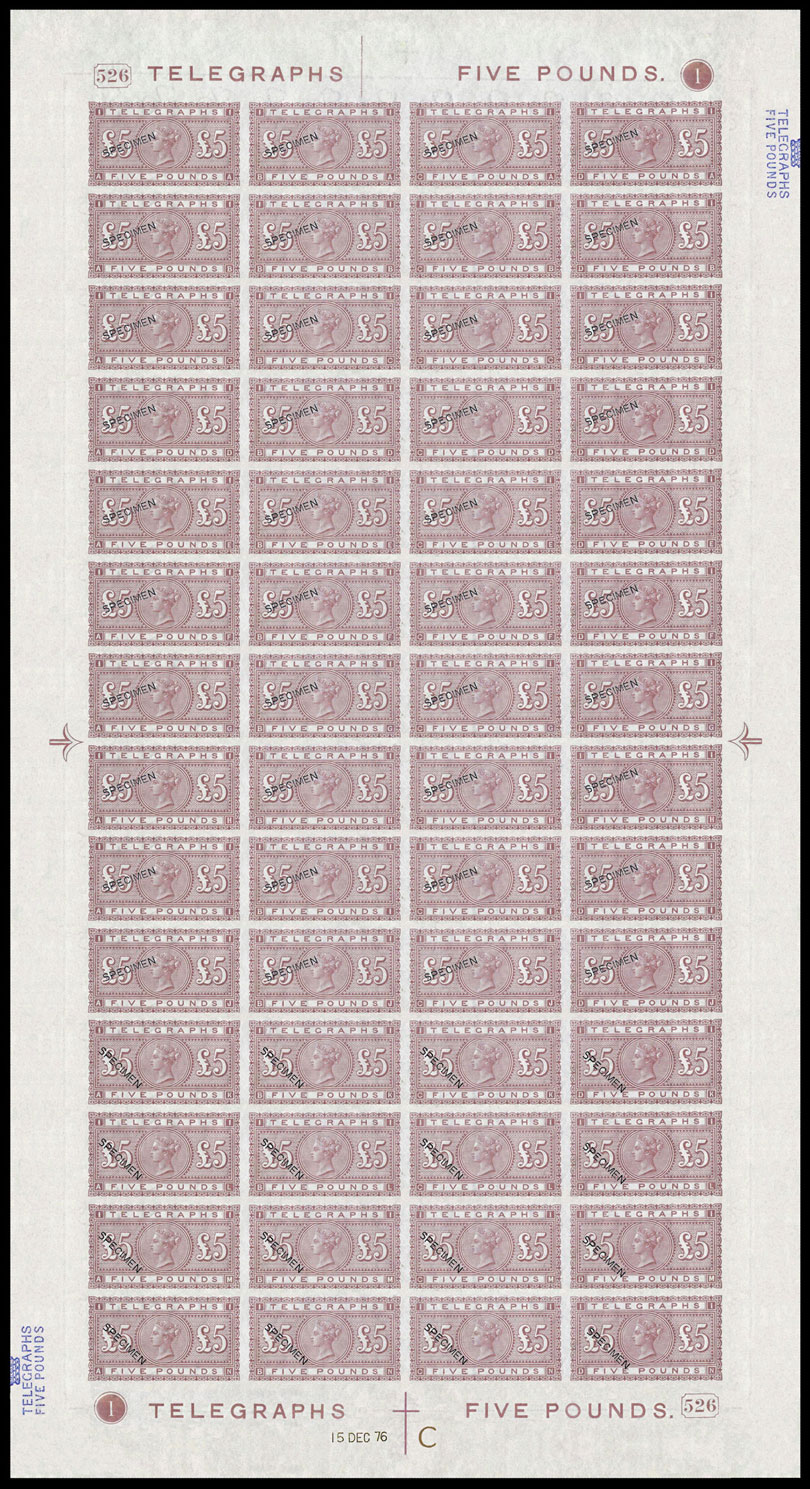
Dull Claret
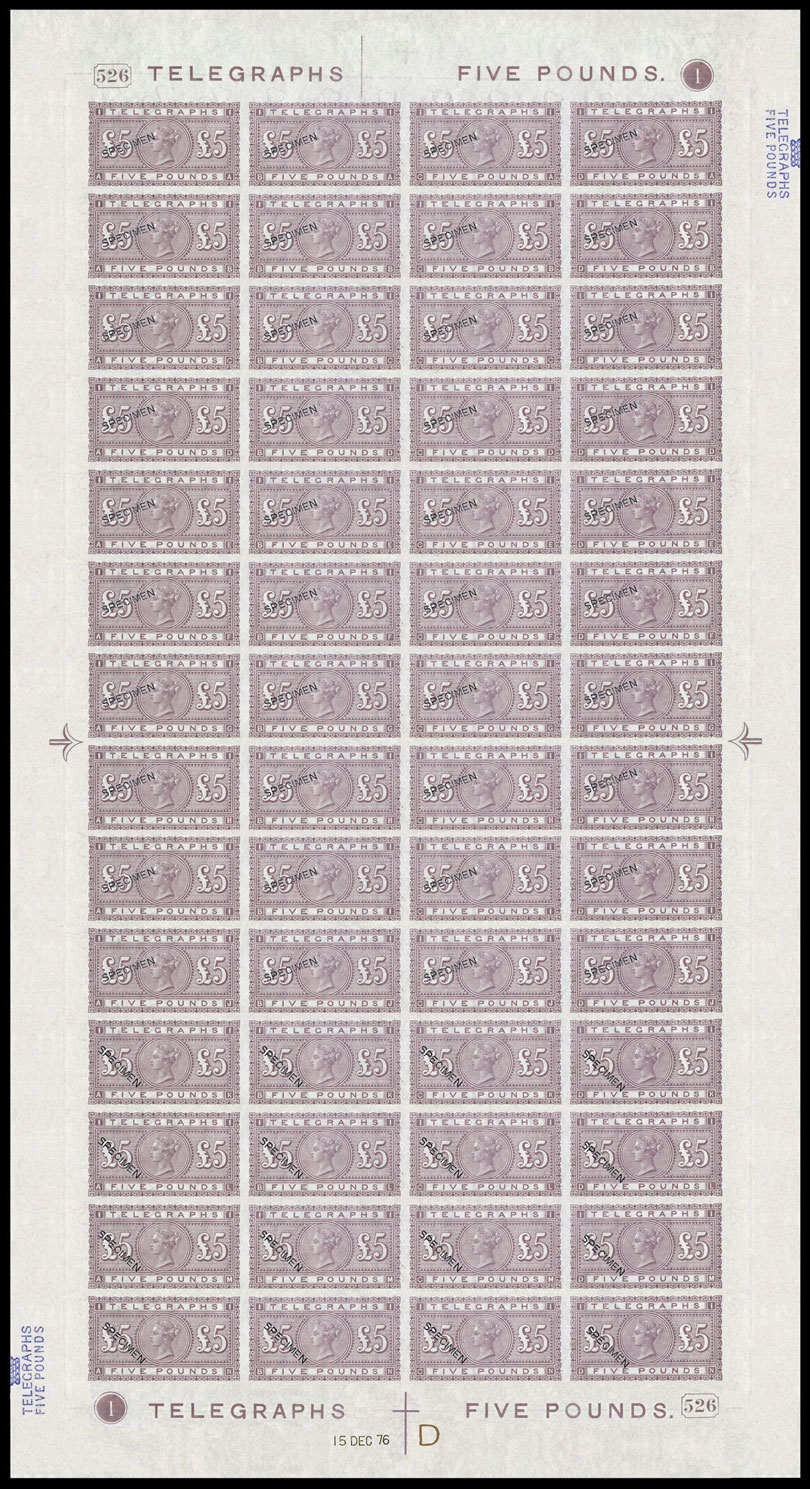
Dull Mauve
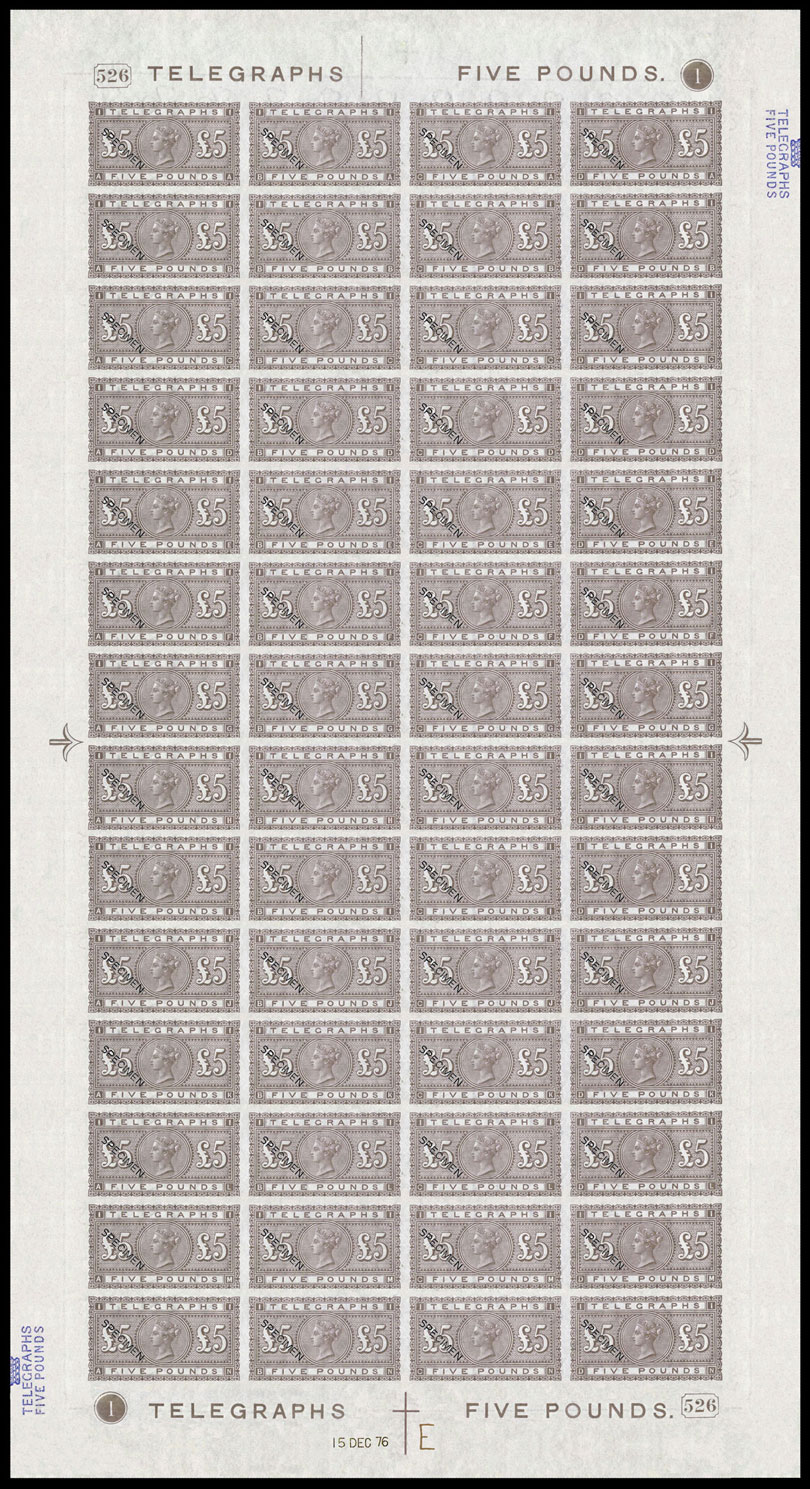
Brown-lilac

Pale Ultramarine
The letters “A” to “F” are written in a block style, always next to the datestamp. Of the 24 possible letter positions, only nine stamps are known to us with letters still attached. Four stamps are known from the appropriate positions but with the margins removed.

| C: | £1 (Royal Philatelic Collection) |
| D: | 3s, £1, £5 |
| E: | 10s, £1 |
| F: | 10s (Langmead Collection), £1 (Phillips Collection), £5 (Royal Philatelic Collection) |
Letters written in a script style appear on other parts of the sheets. Their positions are not consistent and are presumed to have been added later, after the sheets were cut up.

Sheet Reconstructions
Links to all 27 sheet reconstructions are in this table.
| 4d | 6d | 3s | 10s | £1 | £5 | ||
|---|---|---|---|---|---|---|---|
| Sage-green | 4d | ||||||
| Grey | 6d | ||||||
| A: | Grey-green | 3s A | 10s A | £1 A | £5 A | ||
| B: | Slate-blue | 3s B | 10s B | £1 B | £5 B | ||
| C: | Dull Claret | 3s C | 10s C | £1 C | £5 C | ||
| D: | Dull Mauve | 3s D | 10s D | £1 D | £5 D | ||
| E: | Brown-lilac | 3s E | 10s E | £1 E | £5 E | ||
| F: | Ultramarine | 3s F | 10s F | £1 F | £5 F | ||
| Gold | £5 G |
Click the column headings for details of each value.
Selected Colours
The 4d and 6d were in the same colours as the corresponding postage stamps: 4d sage-green, 6d grey. The colours selected for the high values were: 3s slate-blue, 10s grey-green, £1 brown-lilac, and £5 pale ultramarine. These six colours were approved on 19 Jan 1877 but at the last minute it was noticed that the £5 Telegraph stamp in pale ultramarine was too similar to the £5 Probate Court stamp and the colour was changed to vermilion.
All colour trial sheets are overprinted with Specimen Type 8 (at various angles), except for the selected colours, for which part of the sheets received Specimen Type 11 (also at various angles).
The diagrams below show the distribution of Specimen overprints on the sheets in the selected colours. They suggest that sheets were separated into panes before being overprinted, and one pane of each was treated differently, possibly for approval, with the bottom 4 or 5 rows of the £1 and £5 sheets being treated this way.
The type and angle of the overprints are represented by colours, with different colours for overprints sloping diagonally down, no slope (horizontal), and sloping diagonally up. Of particular interest is the Type 8 horizontal overprint (Magenta) which occurs in these panes. The Langmead Collection has one of each value and states they are the only recorded examples. However, we know of second examples of all six values. All are a little grubby and without gum, so probably were stuck down on a document.
| 4d | 6d | 3s | 10s | £1 | £5 | |
|---|---|---|---|---|---|---|
| Langmead Type 8 | TL | TD | TL | AJ | DT | DK |
| Private hands Type 8 | TK | TC | TK | BJ | DS | CK |
| Unknown set | SL | TB | TJ | CJ | DR | BK |
| Approved Type 11 | SK | TA | TI | DJ | DQ | AK |
It is probable that the Type 8 horizontal stamps were the first to be taken, before the stamps were overprinted, and thus received horizontal overprints after being pasted onto a document. Since it was standard practice to make duplicate documents, it is also probable that the second set was so treated. It can be seen that the adjacent stamps form two more sets, but only the fourth set is known on a page of approved colours (click the thumbnail). No stamps from the third set have been seen but again it is probably a duplicate of the existing document, and could be waiting to be found, or could have been destroyed.
| Type 8: | Diag Down | Horizontal | Diag Up |
| Type 11: | Diag Down | Horizontal | Diag Up |
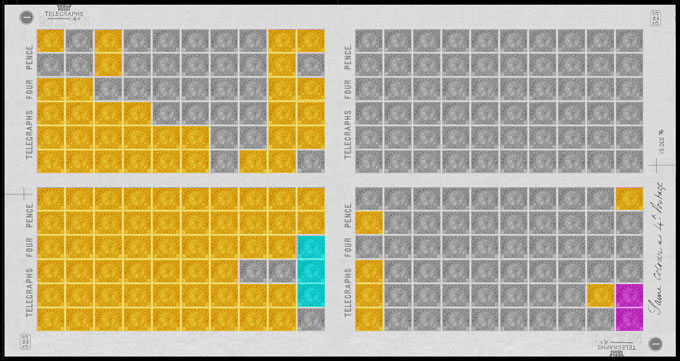
4d. Sage-green
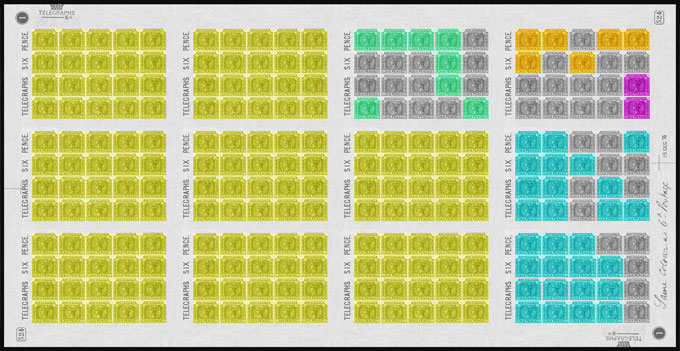
6d. Grey
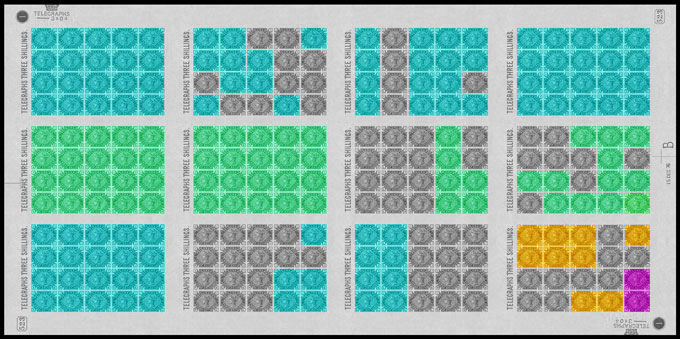
3s. Slate-blue
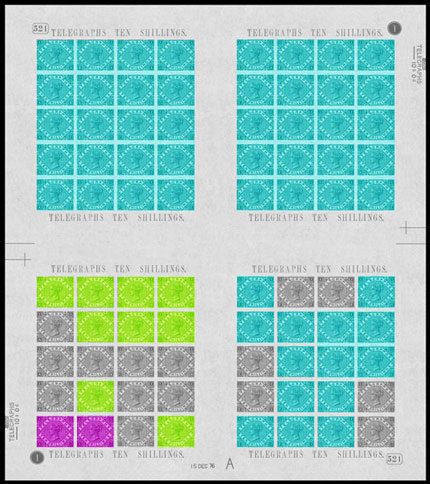
10s. Grey-green
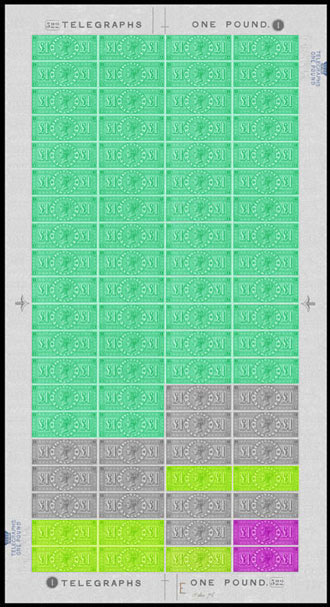
£1 Brown-lilac
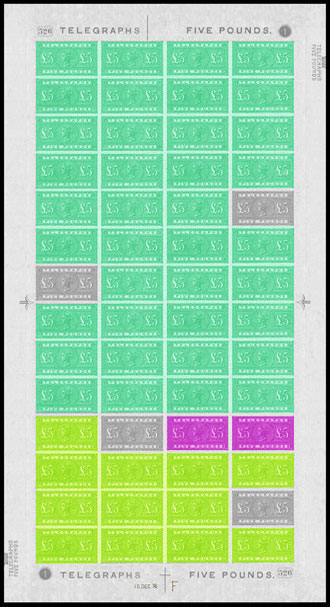
£5 Pale Ultramarine
